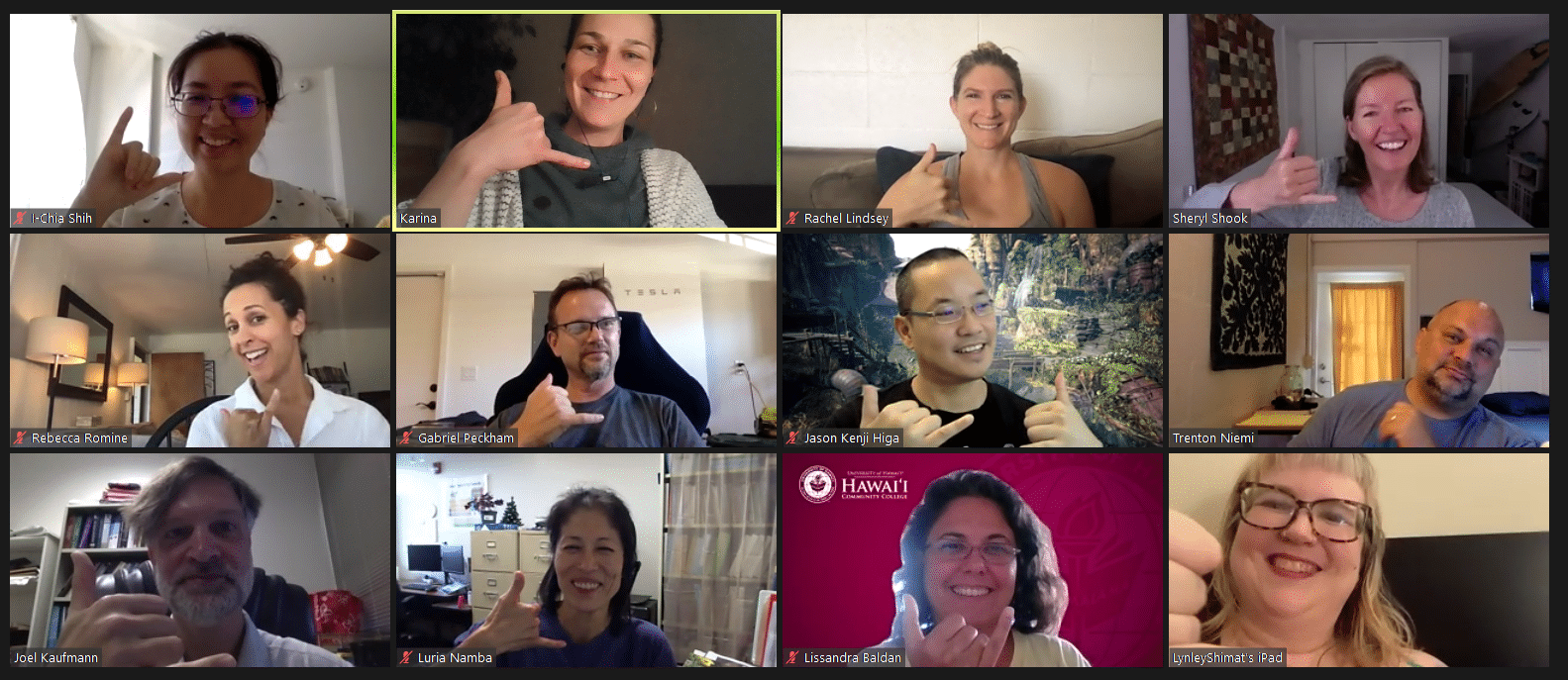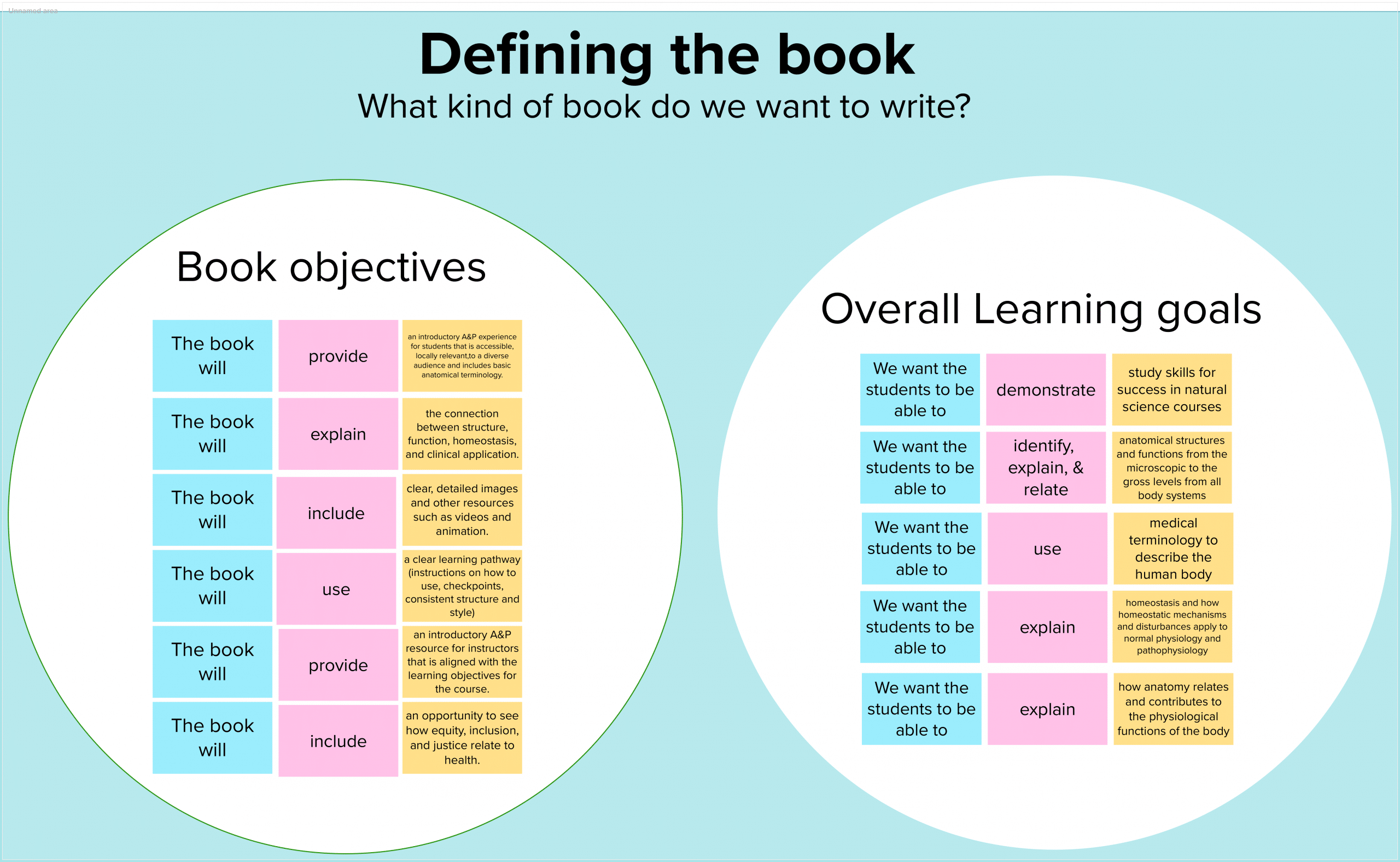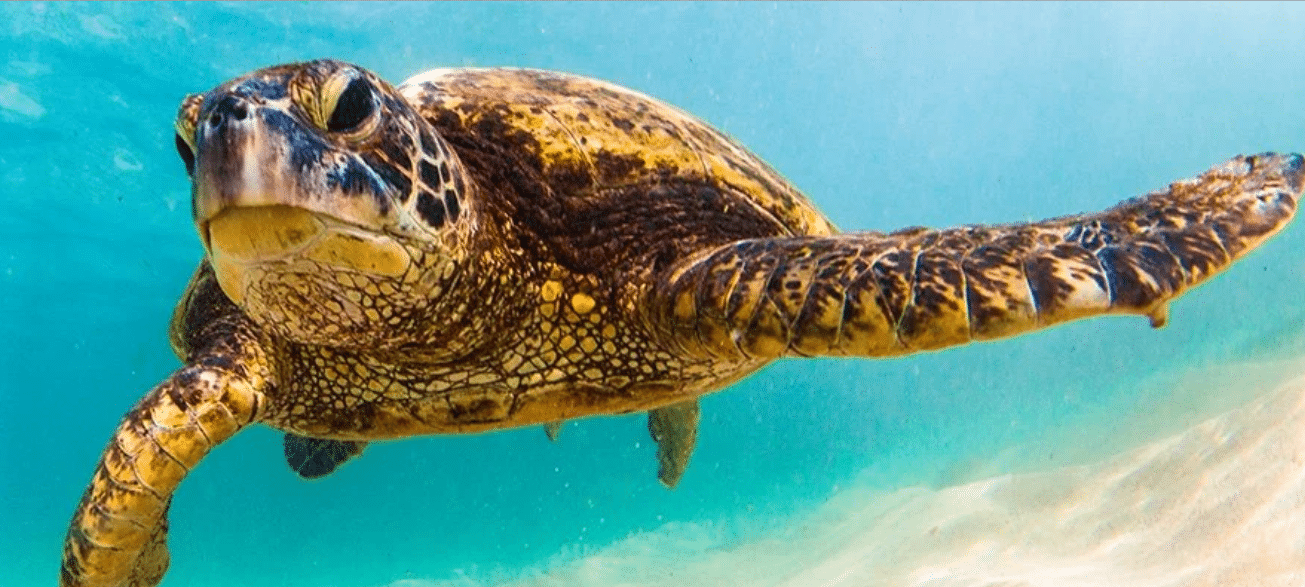Anatomy & Physiology OER Textbook Sprint with University of Hawai’i
In March, a team of 10 faculty members from the University of Hawaii’s many campuses across the islands came together in a virtual Book Sprint to write an Anatomy and Physiology OER textbook.
After two OER Textbook Sprints in 2019, this was the university’s first virtual Book Sprint. It was organised by OER technologist Billy Meinke-Lau and Professor Sheryl Shook. Their job of the organiser was a huge one. By the time the Book Sprint started, they had already been on a journey of defining the framework for the book, securing the budget and logistics and convincing the ten authors to spend two weeks together in an online environment— on the sheer promise of writing a book!

Fig. 1: Aloha! Anatomy and Physiology OER Textbook authors and our facilitator Karina Piersig
Why Open Educational Resources (OER)?
Open Educational Resources (OER) textbooks are open content textbooks that others can use and refine for their own purpose. It holds, therefore, an open license. In this case, the authors refined and edited content from an already existing OER textbook and wrote consistent pieces of new content, which they contribute to the OER community that can re-use it after them.
The Anatomy and Physiology textbook is part of an OER textbook series published by the University of Hawaii at Manoa to drastically reduce the cost of learning materials for its students across the islands. At the same time, with the freedom to build on existing OER, instructors can create content that fits their own teaching style and the needs of their students.
Why another Anatomy and Physiology textbook?
The authors deeply care about their students and it was their goal to create a resource to inspire students to follow the medical path. Despite offering a comprehensive overview of anatomy and physiology, the book is meant to be a useful, accessible and enjoyable companion for the students. One that is not a threat but provides a gradual learning journey through this complex field of study and takes out the overwhelming details that the students would not need.
The book follows a place-based learning approach. Content is embedded in the local history, society and ecology of the Hawai’ian islands. Woven in the text the reader finds information on local health issues, food and environment, and common problems affecting the native Hawai’ian communities.
Each chapter begins with a Hawai’ian proverb, as for example: E lawe i ke aʻo a mālama, a e ʻoi mau ka naʻauao – He who takes his teachings and applies them increases his knowledge.
In addition the book offers study tips, check questions, retrieval boxes and deep dives to help students memorize the large amounts of specialist knowledge and not lose sight of the big picture with all the miniscule details, divide learning over the semester, stay motivated and keep the spirit high.
Why an OER Textbook Sprint?
A Book Sprint is an efficient method to capture the knowledge, experiences and perspectives of a diverse group of authors and publish it fast. The diversity of perspectives in fact only enriches the text. In a usual Book Sprint we start from scratch on the first day. The group collaboratively brainstorms and clusters content and creates a book structure and a flow of arguments from that. In comparison, an OER Textbook Sprint builds on an curriculum and existing OER materials and therefore needs a different kind of preparation.
We held a full day kick-off workshop with the participants two months prior to the Sprint to agree on the book objectives, target audience, scope and style of the book. Students were also invited to the workshop for interviews on their specific needs and ideas for the book to be written, from which the participants then derived the overarching learning goals.

Fig. 2: Book objectives and learning goals of the Anatomy and Physiology OER textbook
We mapped the participants’ various curricula against each other to come up with content clusters, which we then distributed among them with the task to compile a list of OER materials (textbooks, videos, articles, ancillaries etc) for each. The workshop was a great starting point to get to know each other, create consensus on the book’s framework and prepare for the Sprint to come. During the 8-day actual Sprint we created the learning journey, came up with chapter outlines and drafted, reviewed and edited the entire book, which ended up being 130,000 words.
It was an amazing group to work with, says Karina Piersig, the moderator of this OER textbook sprint. The time pressure was high towards the end. But despite meeting online, everyone kept the spirit high until the very last moment. Despite meeting online, it was a very bonding experience for the participants, who were spread across the islands and some of whom did not know each other before. I had planned a lot of social activities around intensive work days. One of the participants who happened to be a personal trainer was even offering body workout exercises after the lunch break. I really needed that to stay energized.. Due to the 12h time difference, I was working from dusk till dawn.
In the closing session, there was one thing left to decide together: Which animal to symbolically adopt as a group. They could not have found a more suitable one. Book Sprints financed the WWF symbolic species adoption of a large sea turtle – the symbol of Hawai’i – as a small farewell gift. We are very happy with this truly outstanding Book Sprint, and are impressed with the dedication and hard work of the participants in producing such a large piece of valuable content that enriches the OER community, at the same time sheds light on the Hawaiian contexts of culture, society and health.

Fig. 3: The Green Sea Turtle – Symbol of Hawai’i
